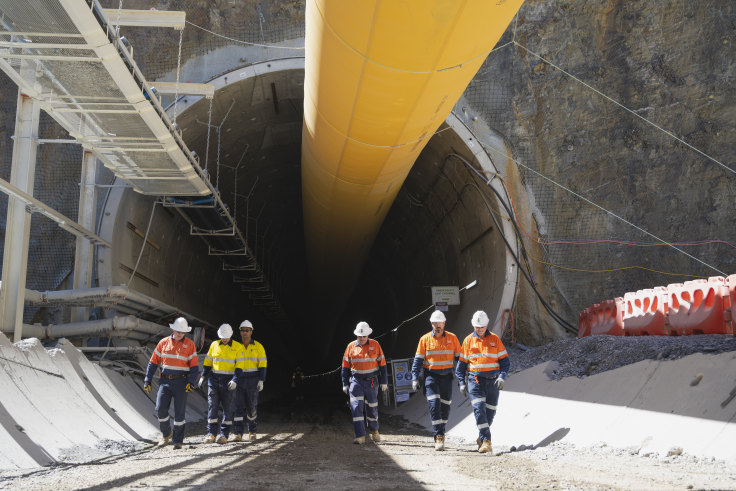The cost associated with the Snowy 2.0 pumped hydro project has experienced a twofold increase over the last six months, approaching nearly $12 billion as indicated by a recent cost evaluation. This surge has compelled the Albanese government to undertake a crucial and financially significant decision regarding the project’s continuation.
Initially unveiled by former prime minister Malcolm Turnbull in March 2017, the ambitious expansion of the Snowy pumped hydro project to 2000 megawatts had an initial projected completion date of 2021 and an estimated cost of $2 billion. However, by May of this year, the cost had expanded to $5.9 billion, and the expected completion date was pushed to 2029.
However, due to concerns of falling behind schedule, Snowy’s CEO Dennis Barnes initiated an internal assessment. Three reliable insiders, requesting anonymity for candidness, disclosed that the updated cost has now approached approximately $12 billion.
Climate Change and Energy Minister Chris Bowen was expecting to receive advice from Snowy on Tuesday regarding the substantial cost escalation. On Thursday, the board of the government-owned corporation is set to deliberate on the review and the revised corporate strategy, which will be published after the meeting.
According to information received, this review will, for the first time, attribute the cost increase to a failure in adequately factoring in geological conditions such as soft soil in Snowy 2.0’s design, which was formulated under the previous Coalition government. This will be in addition to factors such as inflation, labor costs, and delays stemming from COVID-19 restrictions.
Enhanced Generation Capacity of Snowy 2.0 pumped hydro project
Snowy 2.0 is poised to increase the scheme’s overall generation capacity to 375,000 megawatt-hours, equivalent to sustaining 2000 megawatts for an entire week. In contrast, Tesla’s prominent battery installation in South Australia can provide 150 megawatts for a duration of 195 megawatt-hours, allowing for peak power output for approximately 1.5 hours.
A representative from Snowy mentioned that the company would refrain from commenting on conjecture, but assured that a comprehensive and transparent project update would be shared when appropriate.
“In May, Snowy Hydro communicated its intention to recalibrate the project’s delivery schedule and budget for the national energy storage initiative, Snowy 2.0. This endeavor involves collaboration with its key contractor, the Future Generation Joint Venture,” the spokesperson stated.
“The process for revising the budget is well underway, although it’s an ongoing effort.”
Significant delays in construction occurred earlier this year due to Florence, Snowy’s substantial tunnel-boring apparatus, encountering difficulties within soft rock underneath Kosciuszko National Park.
Snowy 2.0 holds significance in promoting the transition to clean energy by providing support to renewable sources during periods of low wind and sunlight. This initiative employs excess electricity to elevate water to higher levels, subsequently releasing it to drive turbines during peak demand periods.
Bowen refrained from offering remarks, although he has previously articulated that Snowy 2.0 plays a crucial role in the government’s commitment to increasing the proportion of renewable energy in the electricity grid to 82 percent by 2030. This move is pivotal for achieving the emission reduction goal of 43 percent by the decade’s conclusion.
Also read Delivery of Snowy Hydro 2.0 Project in Australia to be extended and cost increased

